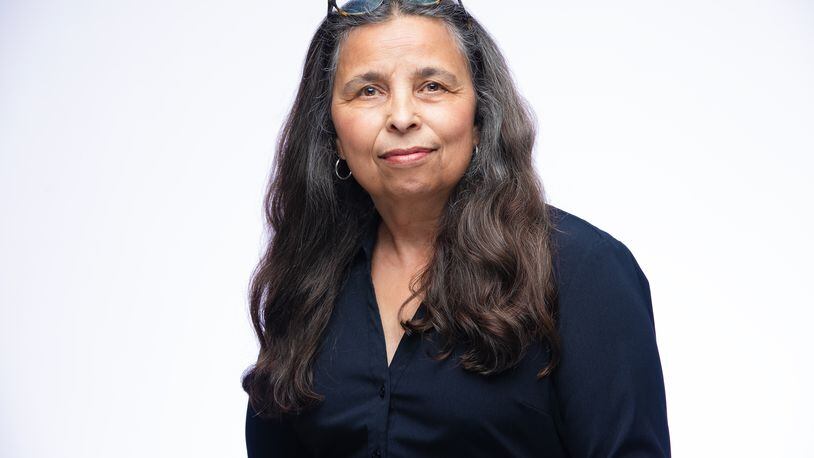The first episode of “Rediscovered Radio: Women’s Voices, Women’s Music in the WYSO Archives” was posted on all major streaming platforms recently.
Fromholt and Robinson recently discussed the new venture.
Fromholt: “Jocelyn and I have a good working relationship. We’ve freelanced together a couple of times over the years on some longer projects outside of WYSO. The way we tend to work together is we will often have ideas for things like this, but we know it’s not the right time. We’re both massively busy, so we’ll store the idea in the back of our minds and we’ll know when the circumstances are right. This one has been lingering for a while, but we started working on it at the end of 2022.”
Robinson: “Organizationally, we knew we needed to grow our podcasting capacity. It seemed like the time was right to experiment with that and champion a project like “Rediscovered Radio.” The actual “Rediscovered Radio” series with elements from the WYSO archives has been in existence since 2013. We were able to rebroadcast a bunch of pieces over the last couple of years and it was time to produce something new from the historical material we have. One of the last pieces I produced was in May of 2017, a real quick glimpse of some of the women’s voices in the WYSO archives. The idea of doing a deeper dive into that material has been floating around in our heads since then.”
Credit: CONTRIBUTED PHOTO
Credit: CONTRIBUTED PHOTO
Connections and context
Fromholt: “We spent a lot of time talking through what we knew we had in the archives and what we knew WYSO’s history to be. We’re both well versed in the history of the station and the arc of our programming. We also looked at our own experiences as women participating in a local music scene and the different eras, venues and people and where they fit in. As you do with any story or project, we considered what goes together thematically. Do we want to focus on eras, scenes or people? We narrowed it down to six episodes that both fit the time and our scene using the archival material as well as looking at local stories through a critical lens.”
Robinson: “WYSO has a much more extensive analog collection than many radio stations of this size. With all the material we do have, I was surprised there weren’t more women’s voices. There are big gaps, really, and the arc of the series speaks to that, from the founding through the late ‘60s. Women’s voices were there but they weren’t prevalent. Then there was sort of an explosion through the women’s movement and other social movements taking place at the time, from the late ‘60s into the ‘70s. Beyond that, women’s voices ended up being found in certain places and not others and that’s still something Juliet is grappling with today as music director.”
A different animal
Fromholt: “Producing for radio is definitely different than working on a podcast. In radio and in public radio very specifically we have to follow the clock. Anything we’re making has to fit in the constraints of the broadcast day, whether that’s a four-minute feature in “Morning Edition” or “All Things Considered” or something bigger that somehow has to fill up an hour on the dot. You don’t have those constraints in the podcasting space. It’s kind of a free-for-all in that regard. The flipside of that is you don’t have the same rights protection as you do on radio, with music very specifically. We have to be very careful about what we’re including and that’s very tricky with a podcast about music. Everything we broadcast on air we have licensing for and it’s different with podcasting so there are different considerations.”
Robinson: “WYSO is not known for its podcasts and that’s a situation we’re hoping to change. Even as we’re getting ready to launch, we’re going through the exercise of what it’s like. There are lot of steps that podcasting takes that broadcast radio doesn’t. We’re developing a digital footprint for the podcast and making sure it’s everywhere it’s supposed to be, and all of those materials are ready to go when the podcast is ready to go. This is a really good exercise for the station. It will teach us the roles, responsibilities and processes we need to have in place to be able to add podcasting to our offerings on a regular basis.”
Fromholt: “People can listen to this anywhere you get podcasts and, of course, it will have a home on WYSO.org. That’s the hub for it but we really encourage people to subscribe on their favorite podcast app. That way as the episodes drop, they don’t have to go looking for them or remember they’re coming out. They’ll come right to your podcasting app. That’s the best way to do it and subscribing actually does help more people find the show and give the podcast a larger audience with Apple, Spotify and other platforms.”
More info: wyso.org
Contact this contributing writer at 937-287-6139 or donthrasher100@gmail.com.
About the Author
